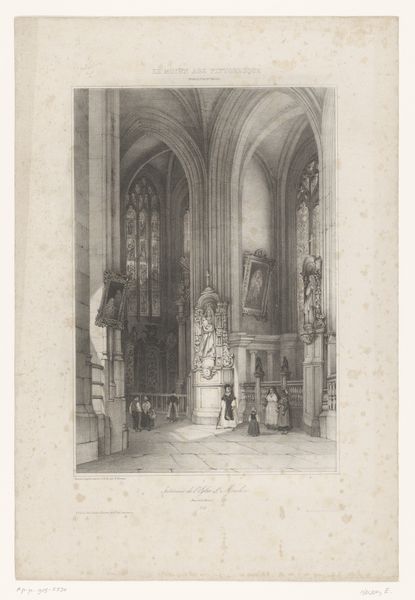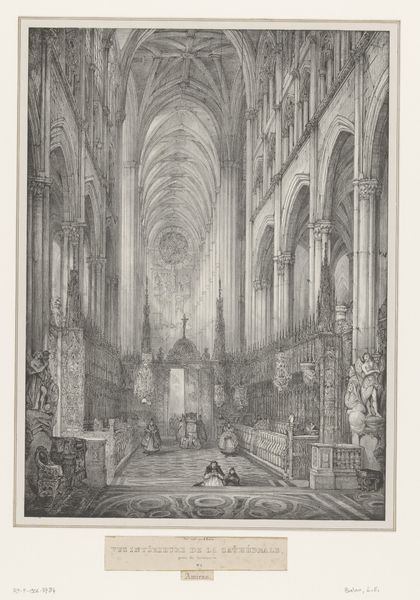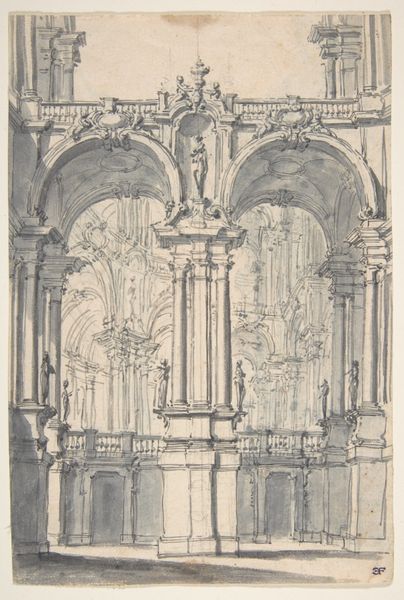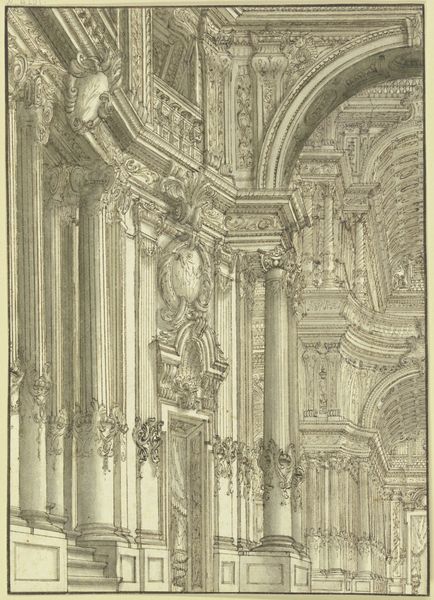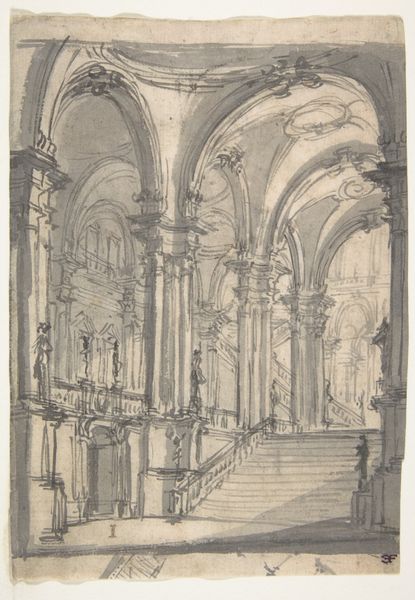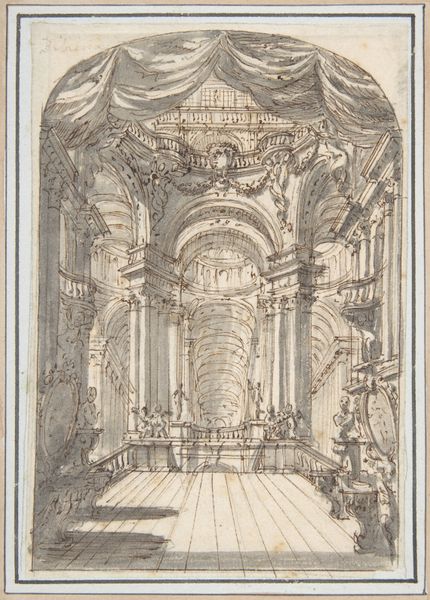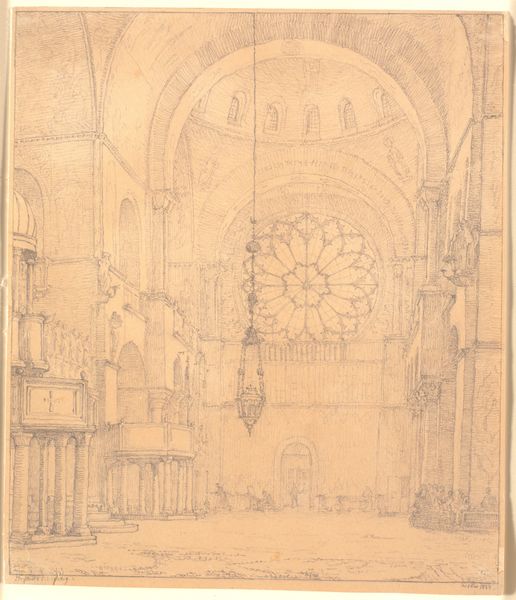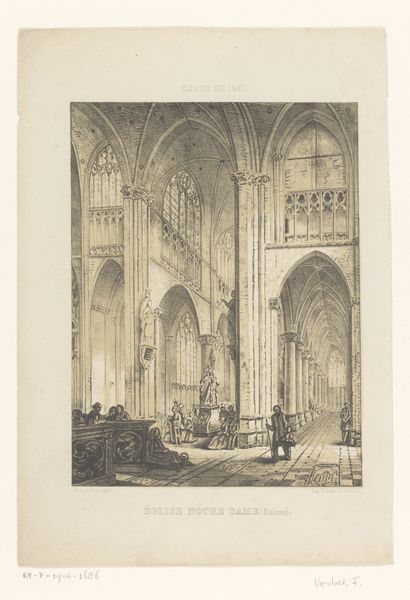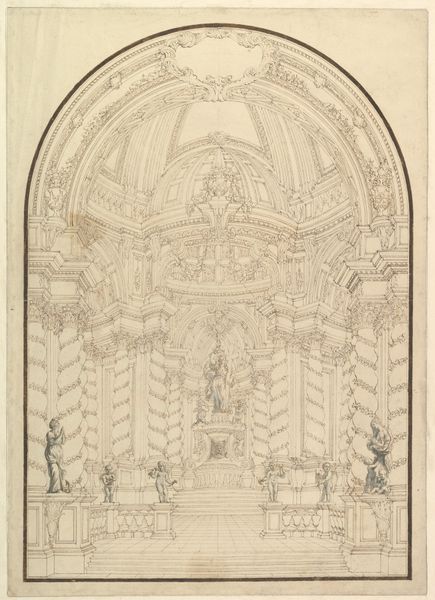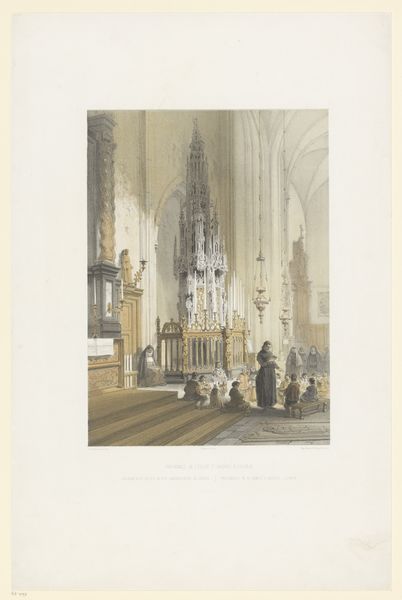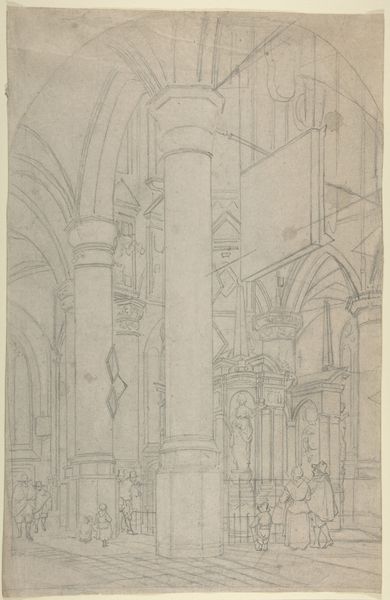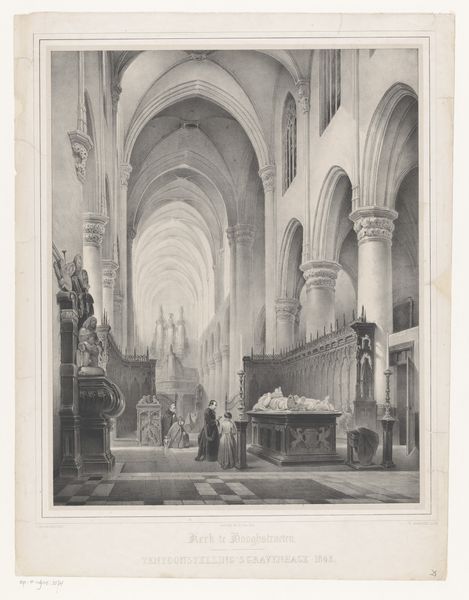
Katafalk voor keizer Karel VI, opgesteld in de St. Gudulekerk te Brussel in 1740 1740
0:00
0:00
drawing, paper, ink, pencil, pen
#
drawing
#
light pencil work
#
quirky sketch
#
baroque
#
pen sketch
#
pencil sketch
#
incomplete sketchy
#
perspective
#
paper
#
personal sketchbook
#
ink
#
sketchwork
#
pen-ink sketch
#
pencil
#
pen
#
cityscape
#
history-painting
#
academic-art
#
sketchbook art
#
fantasy sketch
Dimensions: height 644 mm, width 475 mm
Copyright: Rijks Museum: Open Domain
Curator: This drawing, created by Jacob Colin in 1740, depicts the Catafalque for Emperor Charles VI as it was staged inside the St. Gudule Church in Brussels. The rendering uses pen, pencil, and ink on paper. Editor: My initial reaction is one of stark grandeur—the sheer height of that catafalque, dwarfing everything around it, creates a palpable sense of overwhelming power, even in mourning. Curator: It’s a fascinating rendering, particularly when you consider the catafalque itself. Notice the layering of symbolic elements—the imperial emblems, angelic figures, and drapery, all designed to convey not just grief but also continuity of power. The perspective also draws your eye upward toward the heavens. Editor: The layering is striking. Each symbol meticulously placed to control the narrative surrounding Charles VI’s death. Yet, what about those witnessing the spectacle? They’re reduced to mere sketches at the base, almost ghostlike. Their individual grief seems secondary to the performance of imperial loss. Curator: I agree, the blurred human figures emphasize the dominance of the institution over individual feeling. Even the architectural details of St. Gudule Church echo a divine mandate. This setting becomes a theater for asserting power through sacred architecture. Editor: Indeed. But isn’t there a tension here? The baroque style is meant to inspire awe and reverence, yet this sketch also hints at fragility. The light pencil work reveals impermanence—as if this carefully constructed reality might crumble. Is the artist hinting at the transient nature of earthly power, even at its most performative? Curator: I see that. The artist captured a staged event, where symbolism met emotion, merging earthly loss with claims of divine authority and timelessness, so in effect we witness both a historical and eternal staging. Editor: It’s a powerful image, precisely because it captures that tension. The catafalque stands as a potent symbol of imperial power, yet the ephemeral sketch suggests the ever-present specter of change and ultimately, of course, the transience of human power. Curator: The play of the permanent and ephemeral remains in this sketch long after the funeral staging has ended. Editor: Precisely, making it resonate in our current times too.
Comments
No comments
Be the first to comment and join the conversation on the ultimate creative platform.
